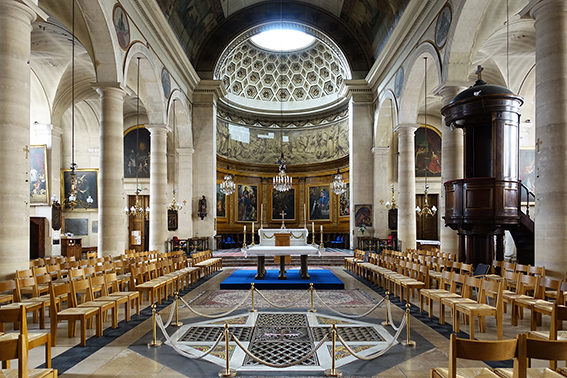Estética neocatecumenal y adecuación litúrgica
De la mímesis estilística a la generalización de modelos
DOI:
https://doi.org/10.17979/aarc.2020.7.0.6328Palabras clave:
estética neocatecumenal, adecuación litúrgica, Concilio Vaticano IIResumen
El desarrollo y codificación de una estética propia en el seno del Camino Neocatecumenal ha motivado la construcción de nuevos templos siguiendo los paradigmas propuestos por Kiko Argüello, pero también la intervención en iglesias ya existentes siguiendo el esquema centralidad-axialidad característico de las propuestas neocatecumenales. Dichas intervenciones han generado adaptaciones provisionales o adecuaciones litúrgicas definitivas, especialmente tras el trabajo del arquitecto Antonio Ábalos en la parroquia de San Pedro el Real de Madrid y los trabajos de Maurizio Bergamo y Mattia del Prete en Italia.
En el presente texto se analizarán una serie de adecuaciones litúrgicas realizadas en iglesias preconciliares muy distintas en su estilo. Aunque todas estas intervenciones siguen el esquema de distribución de focos celebrativos y asamblea propuestos por la estética neocatecumenal, observaremos una doble vía de intervención que opta por la similitud estilística con el entorno arquitectónico existente o bien por la repetición de modelos utilizados en iglesias de nueva planta.
Descargas
Referencias
Bergamo, Maurizio y Mattia del Prete. 1997. Espacios celebrativos. Bilbao: Ega.
Bergamo, Maurizio y Mattia del Prete. 2002. Spazi celebrativi. L’architettura del’ecclesia. Bologna: Dehoniane.
Comisión Espicopal de Liturgia. 1970. Ritual del bautismo de niños. Barcelona: Coeditores Litúrgicos.
Comisión Episcopal de Liturgia. 1986. Bendicional. Barcelona: Coeditores Litúrgicos.
Concilio Ecuménico Vaticano II. 2000. Constituciones. Decretos. Declaraciones. Madrid: BAC.
García Gutiérrez, Pedro Francisco y Agustín Francisco Martínez Carbajo. 1993. Iglesias de Madrid. Madrid: El Avapiés.
García Herrero, Jesús. 2015. «Luis Cubillo y la iglesia de Canillas». En Pioneros de la Arquitectura Moderna Española: vigencia de su pensamiento y obra, 206-223. Madrid: Fundación Alejandro de la Sota.
Higueras Fernández, Jesús. 1986. «Comunidades neocatecumenales en la parroquia de San Pedro el Real (La Paloma) de Madrid». En Evangelización y hombre de hoy: congreso, 325-330. Madrid: Libros Tobal.
Sagrada Congregación de Ritos. 1964. Instrucción Inter Oecumenici para aplicar debidamente la Constitución Sacrosanctum Concilium sobre la sagrada liturgia. En Comentarios a la Constitución sobre la sagrada liturgia, 609-672. Madrid: BAC.
Sagrada Congregación para el Clero. 1971. Carta Opera Artis, AAS 63:315-317.
















